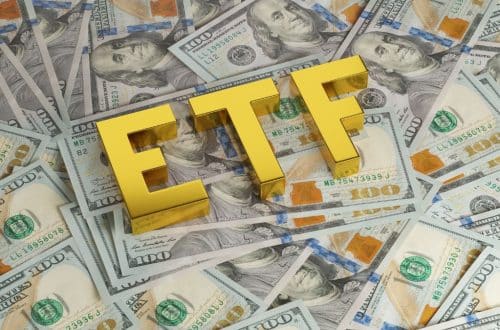
Le FinCEN propose d'utiliser l'article 311 contre les mélangeurs cryptographiques
- FinCEN a introduit un nouvel avis de proposition de réglementation pour les mélangeurs de crypto-monnaie.
- L'agence estime que le « mélange de cryptomonnaies » est un domaine de « préoccupation majeure en matière de blanchiment d'argent ».
- Il vise à minimiser l'utilisation de mixeurs par le groupe Hamas pendant le conflit Israël-Hamas.
- Le directeur du FinCEN a déclaré qu'il s'agissait de la première utilisation de l'autorité de l'article 311 contre une catégorie entière de transactions.
Le réseau de lutte contre la criminalité financière (FinCEN) du Trésor américain a révélé un nouvel avis de proposition de règles (NPRM) pour les mélangeurs de crypto-monnaies qu'il classe comme mélange international de devises virtuelles convertibles (mélange CVC). L'agence estime que ces mixeurs constituent un danger pour la stabilité financière et sont utilisés par des groupes terroristes pour poursuivre leurs actes.
Selon un communiqué de presse, FinCEN cité Le « mélange de cryptomonnaies » est considéré comme un domaine de « préoccupation majeure en matière de blanchiment d'argent » et cherche à imposer la tenue de registres et la déclaration d'informations aux personnes impliquées dans les transactions. Il est intéressant de noter que le public a eu 90 jours pour commenter le NPRM, et il est clair que l'agence maintient une position strictement négative à l'égard des mixeurs.
Le secrétaire adjoint au Trésor américain, Wally Adeyemo, a déclaré que le FinCEN et le Trésor se concentrent sur « la lutte contre l'exploitation du mélange de monnaie virtuelle convertible par un large éventail d'acteurs illicites, notamment des cyberacteurs affiliés à des États, des cybercriminels et des groupes terroristes. », tout en ajoutant :
« Plus largement, le Département du Trésor lutte de manière agressive contre l’utilisation illicite de tous les aspects de l’écosystème CVC par des groupes terroristes, notamment le Hamas et le Jihad islamique palestinien. »
Les mélangeurs cryptographiques permettent aux utilisateurs de masquer les détails de leurs transactions afin qu'il ne soit pas facile de suivre leurs adresses blockchain, entre autres détails. Bien que ces mélangeurs présentent des cas d’utilisation positifs pour les personnes soucieuses de leur vie privée qui ne souhaitent pas être traquées par les outils d’analyse de la blockchain, ils sont principalement utilisés par les cybercriminels et les pirates informatiques pour blanchir les produits de leurs activités illicites.
La directrice du FinCEN, Andrea Gacki, a déclaré que le NPRM proposé marque la première utilisation de l'autorité de l'article 311 contre une classe entière de transactions. Il est intéressant de noter que l'article 311 n'a été utilisé contre des entreprises, des banques ou des pays individuels, comme une banque privée andorrane, Bitzlato, l'Iran et la Corée du Nord, jusqu'à présent.
Gacki a noté que les mélangeurs permettent « aux écosystèmes de ransomwares, aux acteurs étatiques voyous et à d'autres criminels de financer leurs activités illégales et de masquer le flux de gains mal acquis », tout en ajoutant :
« Il s'agit de la toute première utilisation par le FinCEN de l'autorité de l'article 311 pour cibler une catégorie de transactions particulièrement préoccupantes en matière de blanchiment d'argent et, tout comme pour nos efforts dans le système financier traditionnel, le Trésor s'efforcera d'identifier et d'éradiquer l'utilisation illicite et les abus. de l’écosystème CVC.
Comme indiqué précédemment par Bitnation, FinCEN les mélangeurs cryptographiques de marque comme points chauds du blanchiment d'argent, aidant les groupes terroristes. Récemment, le groupe Hamas a collecté des millions de dollars en crypto-monnaies dans sa guerre contre Israël, et l’agence estime que les mélangeurs ont joué un rôle essentiel.







